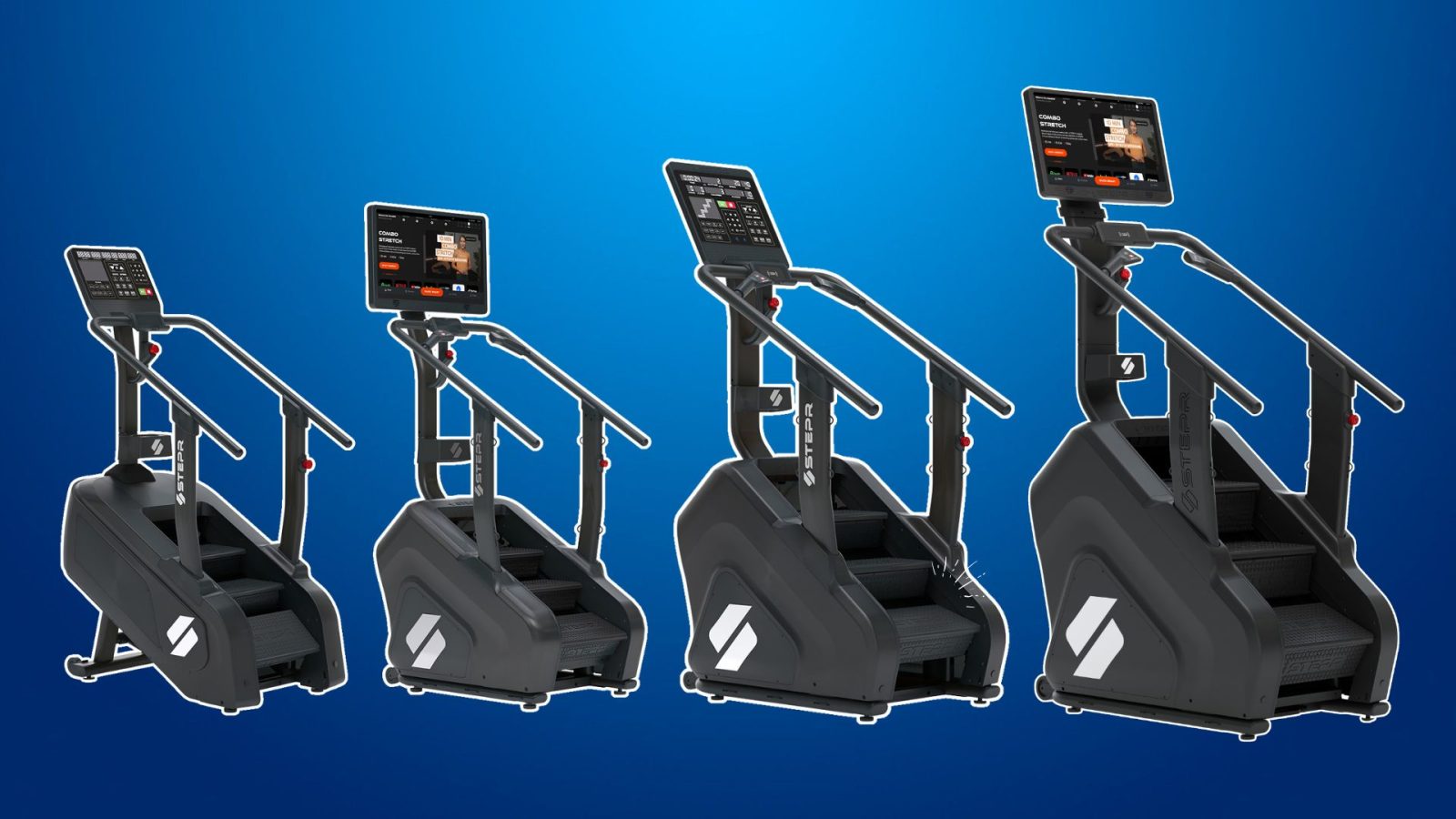
Stair climbers have quietly become one of the most sought-after cardio machines for home gyms, with STEPR leading the charge. But with four different models (the STEPR Go, Home, Pro, and XL) it can be tough to figure out which is right for you.
In this side-by-side comparison I’ll break down exactly how they differ, and which one you should get depending on your goals, space and budget.
Floating step design
All four STEPR models share the same foundation: a compact, belt-driven system that feels smoother and quieter than most gym climbers. The key difference lies in what STEPR calls its floating step design.
On a traditional stair climber, each step connects to the one above it at a 90-degree angle, which can cause your toes to clip the edge of the next step. It’s subtle, but over thousands of steps it becomes uncomfortable, especially for users with larger feet.
STEPR eliminates that issue entirely. By separating each tread so they “float” independently, your toes never hit the step ahead. The result is a more natural rhythm that reduces impact and feels better over time.
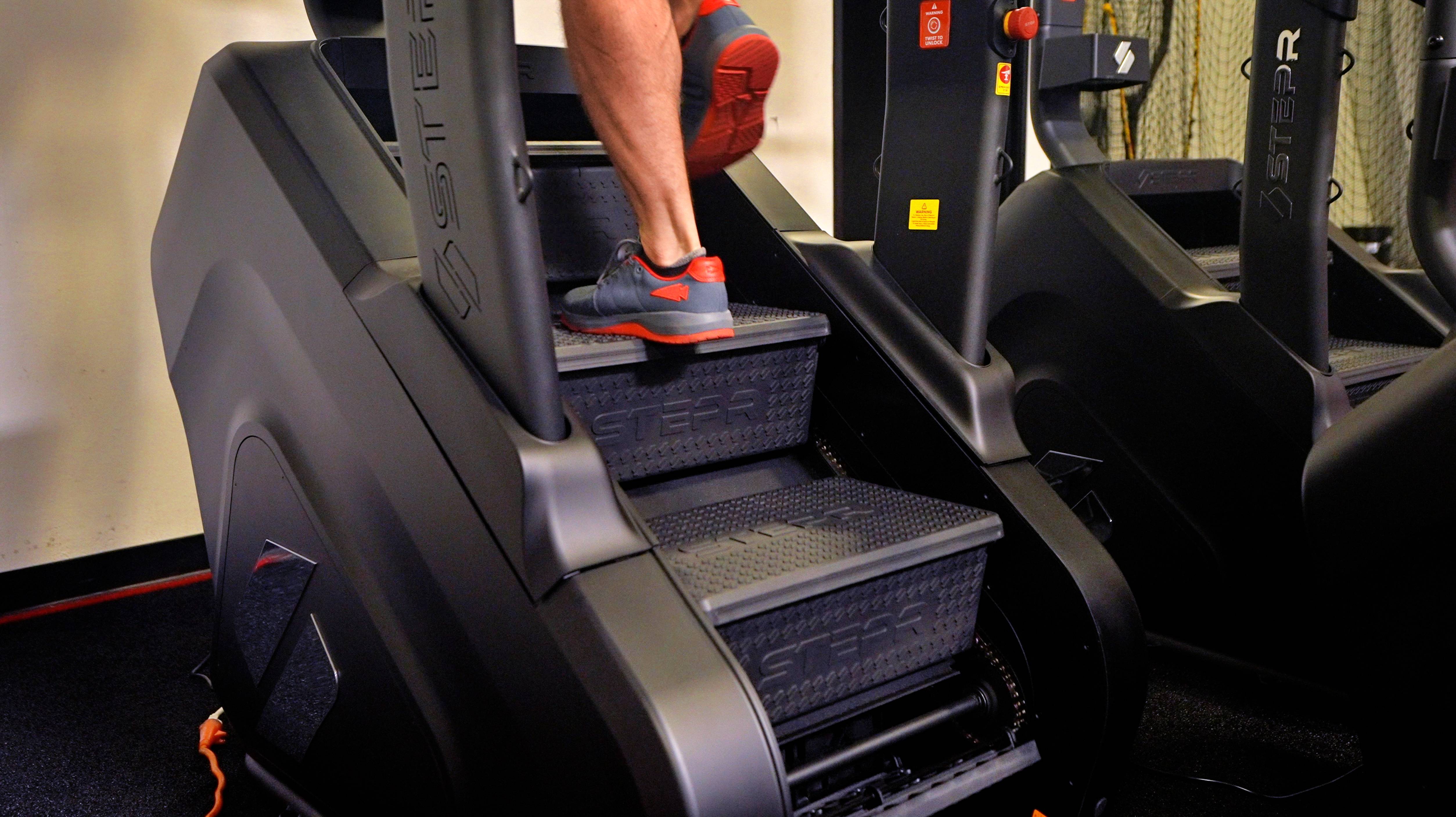
The STEPR Go
The STEPR Go is the most compact and affordable model in the lineup. Developed in partnership with Dick’s Sporting Goods, it’s designed to deliver the STEPR experience in a lighter, more budget-friendly package.
It features a 5.2-inch step height, giving it a quick, athletic rhythm that feels more like running up bleachers than climbing stairs. The Go tops out at 120 steps per minute, which is fast enough for both intervals and steady-state cardio.
If you’re used to large commercial stair climbers, the shorter step height may take a few workouts to adjust to. When I first started, I kept expecting the deeper feel of a gym machine. But after about a week, the shorter stride felt completely natural and even more efficient for higher-cadence sessions.
The Go is a bit lighter, fits through standard doorways, and rolls easily on its transport wheels, making it ideal for apartments or home gyms with limited space. It comes with an LED console only (no touchscreen option) and does not include resistance-band hooks like the higher-end models.
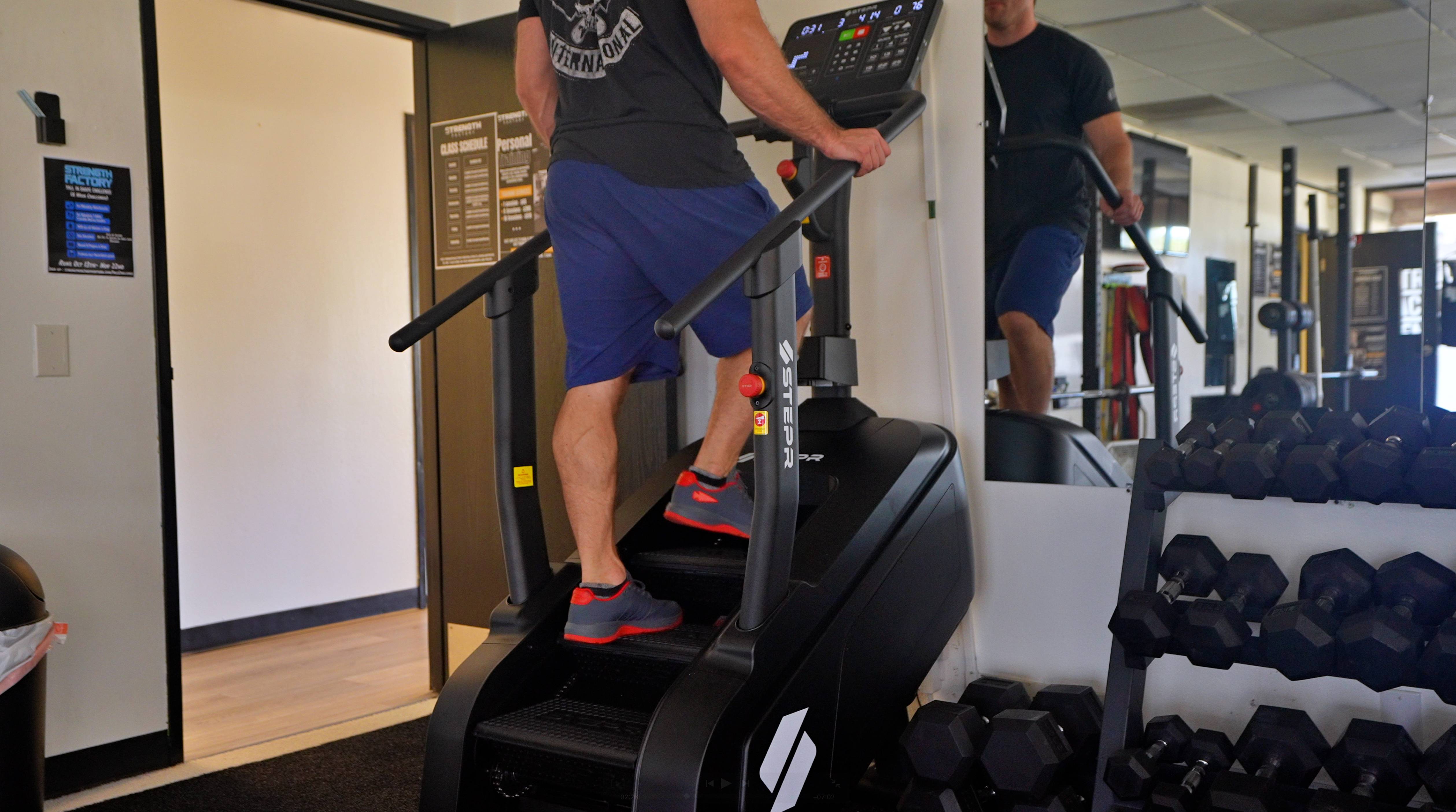
The STEPR Home
The STEPR Home is the original design and still one of the best-balanced options overall. It shares the same 5.2-inch step height as the Go but with heavier, sturdier construction and a top speed of 140 steps per minute. The motion feels identical, quick and fluid, but the build quality feels closer to commercial equipment.
It fits comfortably under an eight-foot ceiling for anyone up to around six-two and easily passes through standard interior doors, making it perfect for most homes and apartments. Unlike the Go, the Home includes resistance-band hooks at the base, allowing you to attach bands for upper-body or full-body training while stepping. It’s a simple feature that adds a surprising amount of variety.
The Home is available in two versions: a standard LED console or the Classic+, which adds a 27-inch touchscreen. That screen opens up scenic routes, over 100 on-demand classes, monthly challenges, and full workout tracking, all subscription-free.
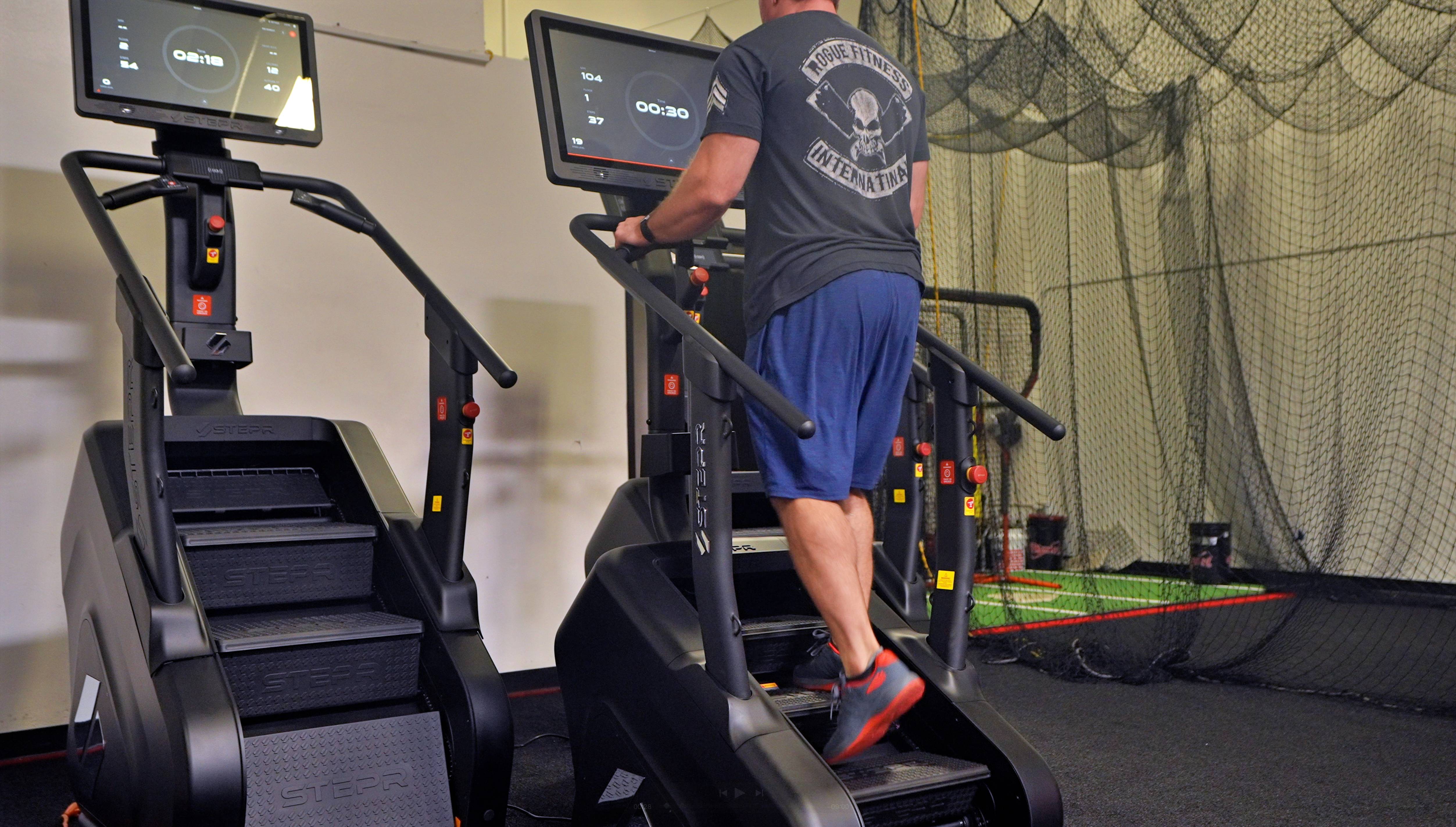
The STEPR Pro
The STEPR Pro marks the transition to light commercial-grade performance. Its seven-inch step height gives each stride more range and power, transforming the workout from quick cardio to something closer to real stair climbing.
For me personally, this is the sweet spot. The seven-inch step hits the perfect middle ground: deep enough to engage the glutes and hamstrings, but not so tall that I have to slow down to maintain rhythm. The Pro’s balance of speed and power makes it the model I come back to most often.
The Pro is rated for light commercial use, meaning it’s built to handle multiple daily users or higher-intensity sessions. It still fits under an eight-foot ceiling, though taller users should double-check clearance. It’s wider than the Go or Home, so you’ll want a wider doorway or an open setup like a garage gym.
Features include resistance-band hooks, wireless phone charging, and a USB-C port. The Pro+ model adds the touchscreen with the same connected features found on the Classic+.
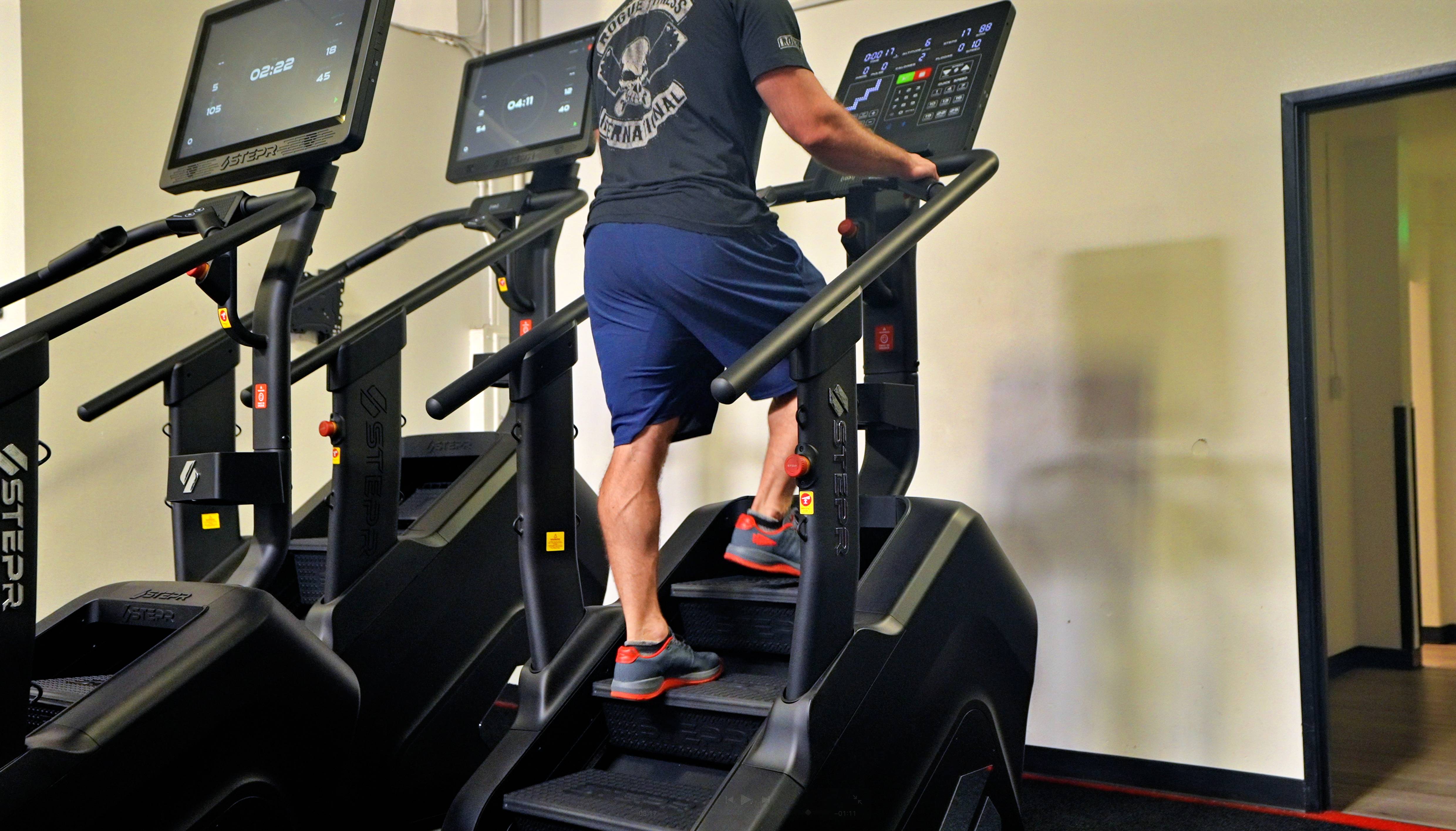
The STEPR XL
At the top of the lineup sits the STEPR XL, a full commercial-grade climber built for gyms and training centers. The nine-inch step height delivers a slower, more deliberate climb that mimics the feel of large commercial machines. Each step engages the legs more fully, offering a strong, muscle-building motion rather than a quick cardio pace.
While many users prefer that deeper, gym-style climb, I personally find the nine-inch step a bit too tall for the speed I like. For me, the seven-inch Pro provides a better balance of range and rhythm. Still, if you love that full, heavy step, the XL delivers it perfectly.
The XL matches the Pro’s 190-step-per-minute capability, though most users won’t approach that speed given the step depth. It includes everything from the Pro, including wireless charging, band hooks, and a USB-C port, plus a pull-out tray underneath to catch dropped items. Because of its height, it requires more ceiling clearance and is better suited for dedicated gym spaces.
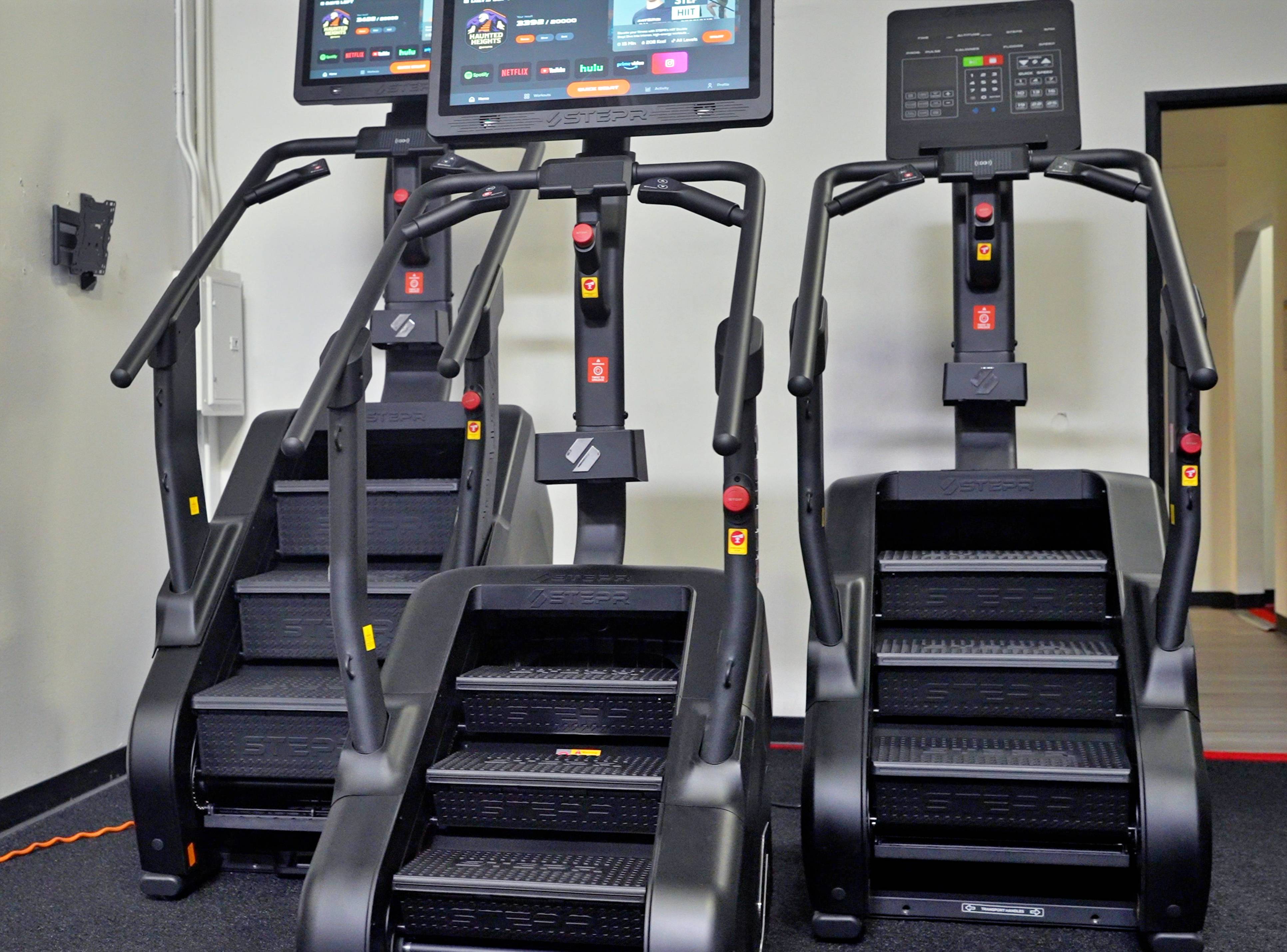
How they compare
Each STEPR model scales in size and power, but the core motion remains the same. The Go and Home share a 5.2-inch step height for a faster, more cardio-driven feel. The Pro moves to seven inches for the best mix of depth and speed, while the XL tops out at nine inches for maximum range and strength.
Speed increases alongside build quality: the Go hits 120 steps per minute, the Home 140, and both the Pro and XL reach 180. The Go and Home are designed for home use, the Pro handles light commercial environments, and the XL is built for full commercial use.
All models fit under an eight-foot ceiling, but if you’re over six-two, the Pro could be tight and the XL may require a taller room. The Go and Home fit easily through standard doors, while the Pro and XL are wider and better suited for larger openings.
The Go is the only model without resistance-band hooks or touchscreen support. The Home, Pro, and XL all include the hooks, and the Pro and XL add wireless charging. The touchscreen, available on the Home+, Pro+, and XL+, adds scenic routes, on-demand workouts, and streaming apps like Netflix and YouTube, all free of membership fees.
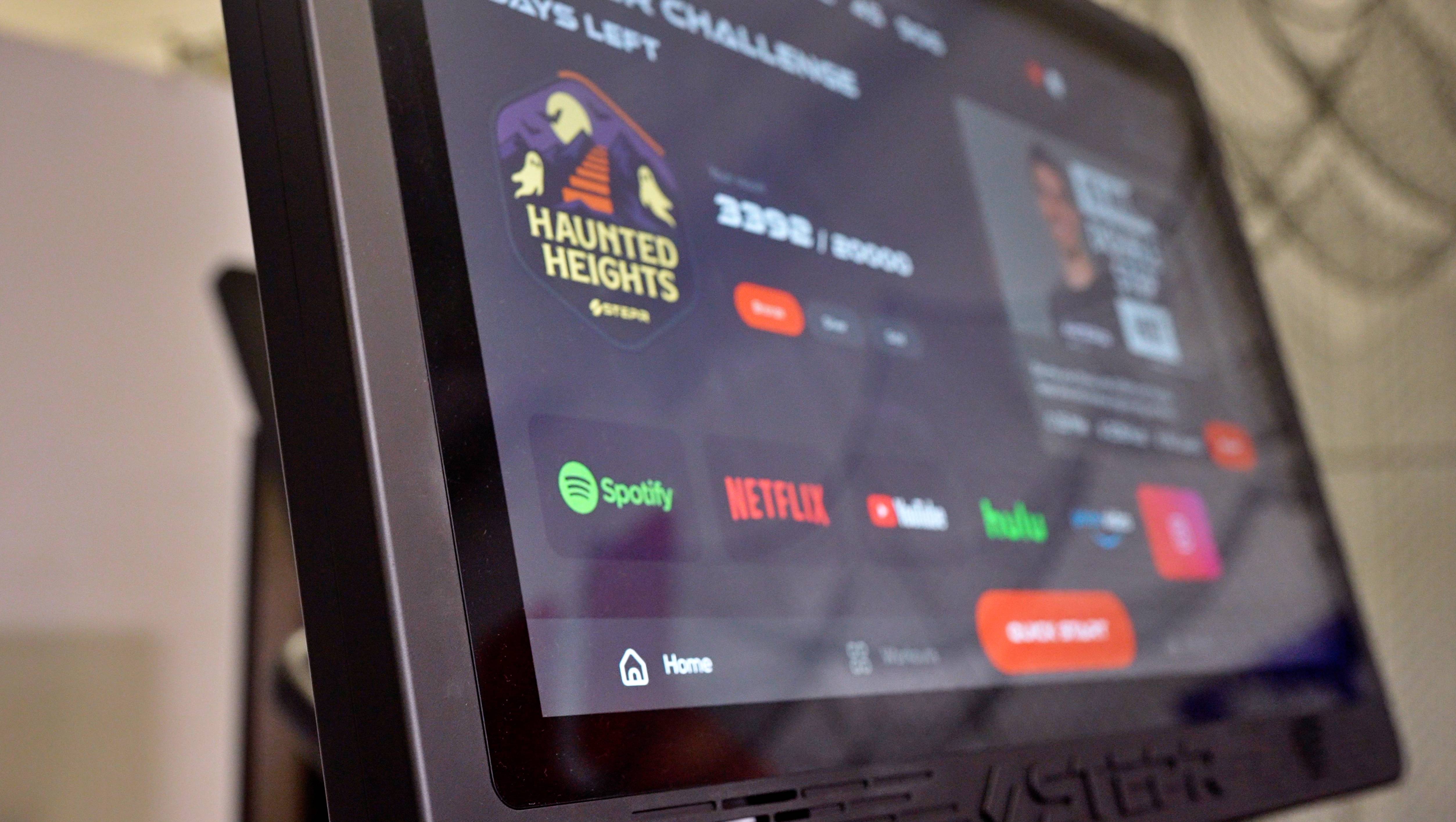
Final thoughts
No matter which STEPR you choose, you’re getting the same quiet, low-impact, floating-step motion that defines the brand. If you want something lightweight and easy to move, the STEPR Go is a strong entry point. If you want more stability and versatility, the Home or Home+ are great all-around choices. The Pro remains my personal favorite for its balance of power, speed, and overall feel. And for those who want a true gym-grade machine, the XL stands alone.
STEPR’s lineup is designed to scale up in size and capability, not in complexity, giving every model the same smooth experience with the added bonus of a fully featured, subscription-free connected platform.
FTC: We use income earning auto affiliate links. More.


